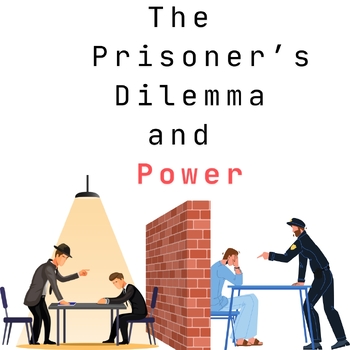The Prisoner's Dilemma and Power
- PDF
Description
The Prisoner's Dilemma is a classic scenario in game theory that explores how rational individuals may not always make the best decisions when they are in a situation where they must choose between cooperation and betrayal. The dilemma involves two individuals who are arrested and charged with a crime. The police offer each individual a deal: if they cooperate and confess, they will receive a reduced sentence. However, if one confesses and the other remains silent, the one who confesses will go free, while the other will receive a harsher sentence. If both remain silent, they will both receive a moderate sentence.
Game theory was used to test different approaches to the Prisoner's Dilemma, and it was found that cooperation was the most successful strategy. In the classic game, both individuals betray each other because they believe their partner will betray them. However, if both individuals choose to cooperate, they will receive a moderate sentence and avoid the harsher punishment that comes with betrayal.
To test the success of different strategies, game theorists created different variations of the Prisoner's Dilemma, such as the iterated Prisoner's Dilemma, where individuals play the game repeatedly, and the public goods game, where individuals must decide how much to contribute to a shared resource. Through these experiments, it was found that cooperation was the most effective strategy in the long run. By cooperating, individuals could build trust and reciprocity, leading to better outcomes for everyone involved.
In conclusion, the Prisoner's Dilemma is a powerful example of how game theory can be used to explore complex decision-making scenarios. Through experimentation, it has been found that cooperation is the most effective strategy, even when individuals may be tempted to betray each other. Individuals can achieve better outcomes for themselves and society by working together and building trust.
Materials:
- A large play area
- Hula hoops (one per two students)
- A flag, jersey, or pinnie that matches the color of each hula hoop
- Twice as many rubber disc dots as you have hula hoops
- Minimum Number of Students Needed: This game could be played with as few as two students. However, there would not be much variety. If one student is much faster than the other (asymmetry), they will not be able to experience the game when speed is symmetrical, which forces more strategic thinking. Having more students allows more coupling, which would create a higher chance for students to find their match in terms of speed.
- Prior Knowledge: Students might be studying government systems or how power is distributed amongst citizens in a country. This game would also work well with discussions on psychology and SEL topics.


